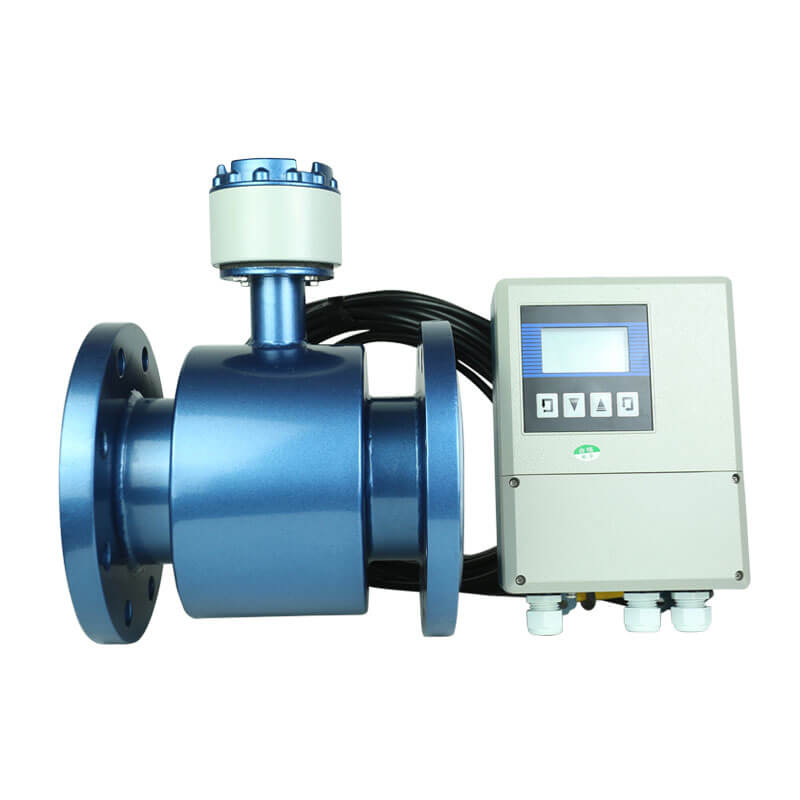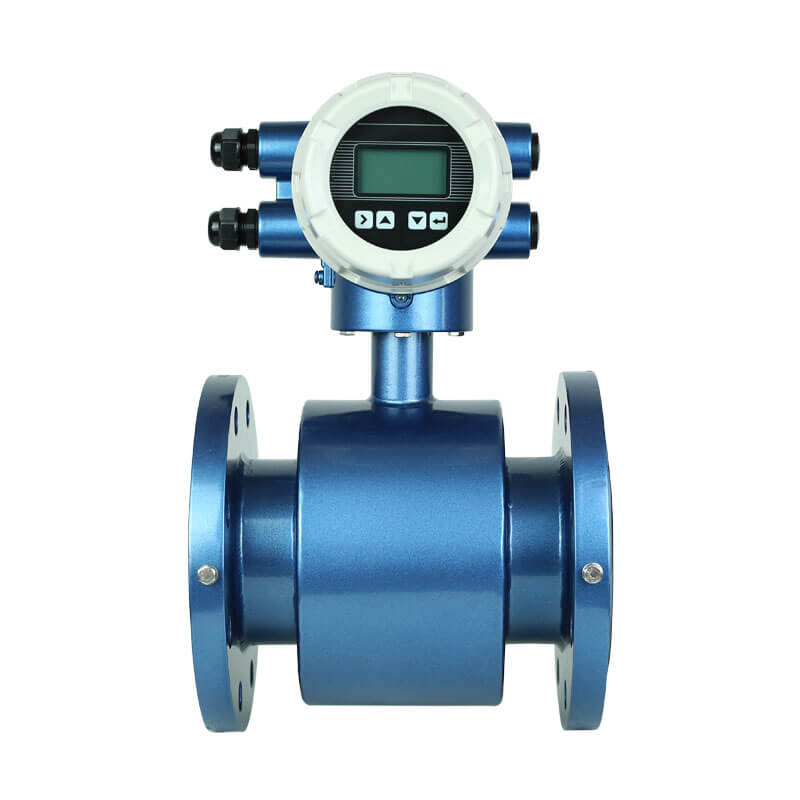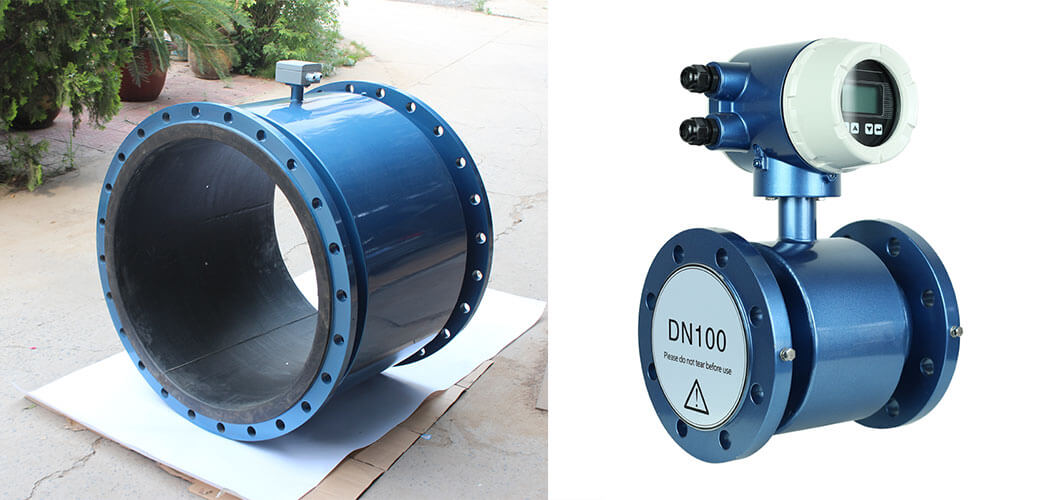Real case analysis of electromagnetic flowmeter
According to the installation method, electromagnetic flowmeter can be classified into three types: integrated electromagnetic flowmeter, split electromagnetic flowmeter and plug-in electromagnetic flowmeter. From the convenience of installation, the integrated electromagnetic flowmeter is more convenient than the split electromagnetic flowmeter and the plug-in electromagnetic flowmeter. However, the split electromagnetic flowmeter can observe the field situation remotely, while the plug-in electromagnetic flowmeter can greatly reduce the installation cost in large diameter pipeline. At present, in China’s smelting and casting industry, the use of electromagnetic flowmeter as flow detection instrument accounts for more than 90%.

Remote type electromagnetic flow meter
The selection of flowmeter is very important, improper selection will bring inconvenience to the later use of flowmeter, even can not measure normally. For example, the time difference ultrasonic flowmeter was initially used in the outlet flow meter of the pump house of Nanjing No.2 waterworks. Because the characteristics of bubbles in the outlet water of the pump house were not considered in the design, the time difference ultrasonic flowmeter could not work normally after being installed, and finally had to be replaced by electromagnetic flowmeter. For another example, in the measurement of raw water, we can not choose the ordinary flowmeter, we need to choose the scraper type electromagnetic flowmeter, and regularly clean the attachments on the electrode. However, in the measurement of medium with large particles, the effect of scraper type electromagnetic flowmeter is not very ideal, and the wear of particles on the electrode will reduce the measurement accuracy.

Compact type electromagnetic flow meter
For example, in the wet system of a chemical plant in Suzhou, six sets of hhld electromagnetic flowmeters were purchased for the measurement of new liquid flow. They were purchased and installed in October 2013. After the detection, the indicators were normal and the flow range met the requirements. However, after using for a period of time, it is found that the crystallization in the sensor will cause short circuit. When the crystallization will cause short circuit, the flow range of the electromagnetic flowmeter will become smaller and smaller; when the crystallization in the sensor does not cause short circuit, the flow range of the electromagnetic flowmeter will gradually become larger. After the customer service communicated with the customer, in order to solve the problem as soon as possible and let the customer resume production as soon as possible, our company immediately sent the after-sales engineer to the scene to check. Through analysis and inspection, we immediately came to the conclusion that there may be asymmetry in the electrode grounding resistance at both ends of the electromagnetic flowmeter, so we came to the conclusion that the sensor itself may have a fault. Subsequently, in order to minimize the loss of customers, engineers used our ultrasonic flowmeter to temporarily replace the electromagnetic flowmeter to measure the new liquid, and then stopped the production and maintenance of the electromagnetic flowmeter. Our engineers disassembled the measuring tube inside, and found that the final crystal on the inner wall was as much as 40mm, and the electrode surface was covered with a large number of crystals. After the cleaning of the counter electrode, the electromagnetic flowmeter was stopped The flowmeter operates normally. After the investigation of the field environment, it is found that the electromagnetic flowmeter is in the outdoor operation, and it is in the cold winter at that time, so the cause of this failure is the crystallization blockage of the internal pipeline of the electromagnetic flowmeter caused by the cold climate.


